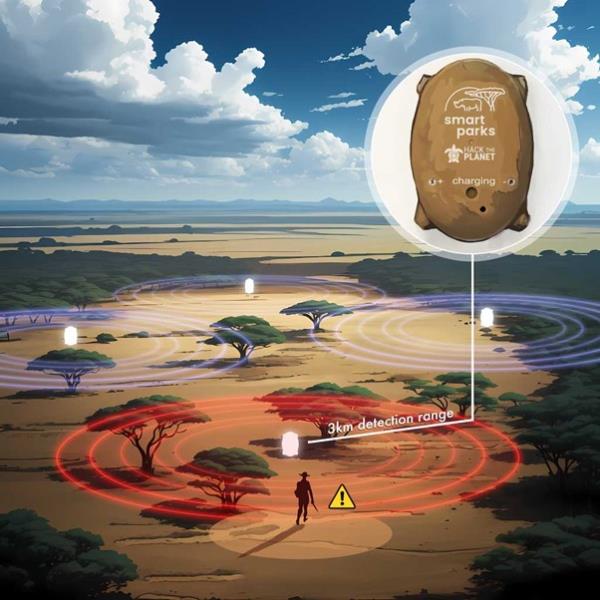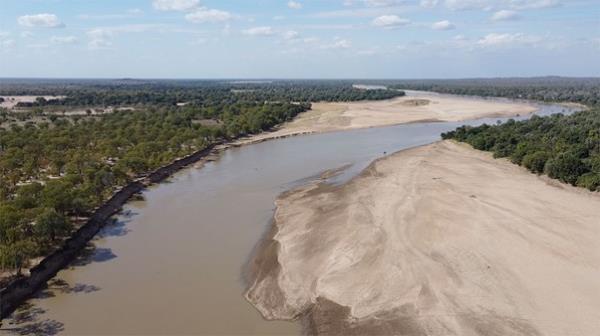31 October 2024

According to the World Animal Foundation, poaching is worth between $7-$23 billion annually, with one rhino falling victim every 16 hours, and 35,000 elephants poached annually in Botswana alone. It’s a lucrative trade, and one that has a significant impact across the whole globe, endangering many species, and putting the lives of rangers at risk.
Traditional tracking can be slow
Traditional methods of monitoring and prevention are invariably resource-intensive, especially in expansive remote areas where rapid response times are crucial but challenging. Typically, this has involved foot patrols by park rangers, and the use of informants – with rangers physically having to patrol on foot, often across rugged terrain, to identify the signs of illegal activity, such as snares or poachers' tracks. The alternative of aerial surveillance by helicopter or small plane is effective in monitoring the most inaccessible areas, but this can be costly and is limited by weather conditions.
With advancements in satellite technology, however, this process is now improving. Drones, camera traps, and GPS collars on animals are helping to reduce costs and increase efficiency, allowing for faster, real-time monitoring with reduced requirement for manpower. All of this is making conservation more effective and scalable.
However, none of this technology can work unless it’s underpinned by reliable connectivity. This is where satellite is proving to be such a game-changer.
In Zambia, the Conservation Lower Zambezi (CLZ) was formed to curtail poaching in the Lower Zambezi National Park in the south-east of the country and in 2022, just 10 elephants were poached. This sits in contrast with 58 in 2016, with 119 suspected poachers going on to be arrested – nearly all of whom (84%) were convicted.
In Zambia, we collaborated with a non-profit organisation committed to leveraging advanced engineering and technology to address critical global challenges. To overcome the issue of connectivity in remote areas, Hack the Planet needed a dependable communication system to enable the real-time transmission of detection data to park rangers. Satellite technology proved indispensable, providing the resilient connectivity required for sensors to function and transmit data effectively in the detection of unauthorised human activity, particularly poachers. The solution needed to be reliable, cover very large areas, and function in environments with otherwise very limited connectivity.
A major technical hurdle was ensuring the sensors could transmit data to park rangers from remote locations in real time, so the sensors were developed specifically to detect cellphone signals within a 3km radius of the prohibited location. Information was then instantly relayed to park rangers, enabling them to respond and prevent illegal poaching in a timely manner.
A dedicated satellite modem was installed to allow the sensors to transmit data from remote areas of the park, where there is no cellular network coverage, to a central monitoring station, with park rangers receiving immediate alerts to respond quickly.

Life through a lens
Over the years, the use of camera technology has augmented sensor-based anti-poaching strategies. Conventional monitoring systems relied on cameras to track poaching activity, but the data was often collected and analysed months later. As a result, rangers only learned where the animals and poaching threats had been, and not where they were presently. This lack of real-time location data made it difficult to intervene in time to make an arrest.
Again, technology has come to the rescue. Specialist nature technology business Digital Forest developed an AI-powered smart camera trap, a satellite enabled remote device that could continuously monitor animal and human activity, even in dense forests, day or night. When motion is detected, advanced image recognition technology identifies and classifies different animal species. These images are instantly available around the clock, providing rangers with real-time updates on the animals' locations.
The first generation of these AI-powered camera traps used a satellite modem to transmit sighting data and metadata via the Iridium Short Burst Data (SBD) service, enabling reliable real-time telemetry from anywhere in the world. However, Digital Forest's second-generation device enhanced this capability still further by enabling the transmission of images, allowing for more accurate detection of illegal poachers and delivering real-time alerts. Our satellite IoT gateway enabled Digital Forest to quickly and easily integrate two-way messaging into their own applications.

The future’s looking brighter
Satellite IoT bridges communication gaps in regions with little or no cellular coverage, ensuring continuous tracking of both wildlife and poachers. Devices equipped with AI and satellite connectivity can detect human activity in restricted areas, instantly alerting rangers to intervene before poaching occurs.
The impact of technology on reducing poaching is already evident. According to the African Wildlife Foundation, poaching of African elephants has decreased by 50% over the past decade. In Kenya, rhino poaching incidents dropped by nearly 90% from 2013 to 2021, thanks in part to the use of smart tracking technology.
As satellite IoT technology advances, it will continue to support conservation authorities across Africa by delivering real-time data, improving response times, and ultimately contributing to the decline of poaching activities globally.







